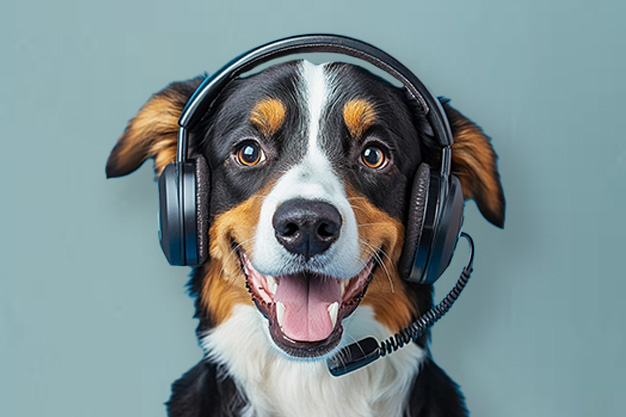
If you have an unspayed female dog, you’ll need to be prepared for the heat cycle, a natural part of her reproductive process. This period, also known as estrus, typically occurs twice a year and lasts about two to three weeks. While it’s a normal stage in a dog’s life, managing a dog in heat can be challenging for owners. Knowing what to expect and how to care for your dog during this time will ensure her comfort and safety while keeping your household calm and stress-free.
Understanding the Heat Cycle
The heat cycle has four distinct stages:
Proestrus
This is the initial stage, lasting about 7-10 days. You’ll notice swelling of the vulva and a bloody discharge. During this time, male dogs may be attracted to your dog, but she’s unlikely to be receptive.
Estrus
The second stage, lasting 5-14 days, is when your dog is fertile and may allow mating. The discharge may become lighter in color, and her behavior might change as she becomes more receptive to male dogs.
Diestrus
During this stage, lasting about 60-90 days, your dog is no longer fertile, and her body begins to return to normal.
Anestrus
This is the resting phase between heat cycles, lasting about 4-6 months.
Signs Your Dog Is in Heat
Common signs that your dog is in heat include:
Swollen vulva
Bloody discharge
Increased urination
Behavioral changes, such as restlessness or clinginess
Attracting attention from male dogs
Knowing these signs will help you identify when your dog is in heat and take the necessary precautions.
How to Care for Your Dog in Heat
Keep Her Comfortable
Provide a clean and quiet space where your dog can rest during her heat cycle. Many dogs may feel more tired or stressed during this time, so creating a calm environment is essential. Use doggy diapers or washable pads to manage the discharge and keep your home clean.
Limit Outdoor Time
When your dog is in heat, her scent can attract male dogs from a considerable distance. Limit her outdoor time and never leave her unsupervised. Walk her on a leash and avoid areas where other dogs might be present. Even a fenced yard may not be enough to deter determined male dogs.
Monitor Behavior Changes
Your dog’s behavior may change during heat, and she may display restlessness, mood swings, or a reduced appetite. Pay attention to her needs and offer comfort with gentle attention or her favorite toys. Avoid scolding her for any unusual behavior, as it’s driven by hormonal changes and not disobedience.
Prevent Unwanted Pregnancy
If you’re not planning to breed your dog, it’s crucial to prevent accidental mating. Supervise her closely, and if male dogs are persistent, consider scheduling her outdoor time during quieter parts of the day. Additionally, ensure your home is secure so she cannot escape.
Maintain Hygiene
Cleaning your dog regularly during her heat cycle helps manage odor and discharge. Use a damp cloth to gently clean her vulva, ensuring she remains comfortable. Avoid bathing her too frequently, as this can irritate her skin. Doggy diapers can be a helpful tool to keep both your dog and your home clean.
Addressing Challenges
Managing Male Dogs
If you have male dogs in your household, keeping them separated from the female in heat is essential. Confine them to different areas of the house or use baby gates to prevent contact. Male dogs can become stressed or agitated when a female is in heat, so providing distractions like toys or extra playtime can help.
Dealing with Anxiety
Heat cycles can be a stressful time for dogs. Signs of anxiety include whining, pacing, or difficulty settling down. Calming products like pheromone sprays or calming treats may help soothe your dog. Spending extra time with her and providing plenty of physical and mental stimulation can also ease her anxiety.
Veterinary Support
If your dog’s heat cycle seems abnormal, or if she experiences excessive bleeding, lethargy, or other concerning symptoms, consult your veterinarian. They can provide guidance and ensure there are no underlying health issues.
Long-Term Solutions
If managing heat cycles becomes too challenging, spaying your dog may be the best option. Spaying not only prevents heat cycles but also eliminates the risk of unwanted pregnancies and reduces the likelihood of certain health issues, such as uterine infections and some cancers. Discuss the timing and benefits of spaying with your veterinarian to determine the best approach for your dog.
At TelaVets, We’re Here to Help
At TelaVets, we understand the challenges of caring for a dog in heat. Our licensed veterinarians are available to provide advice and answer any questions you have about managing your dog’s heat cycle. From tips on maintaining hygiene to strategies for reducing stress, we’re here to support you every step of the way.
With TelaVets, expert care is always just a click away. Whether you’re navigating your dog’s first heat cycle or looking for long-term solutions, we’re here to help you keep your dog healthy, happy, and comfortable.

